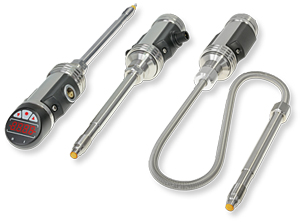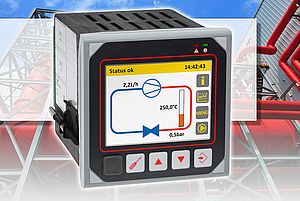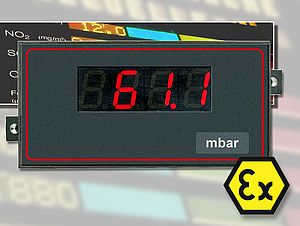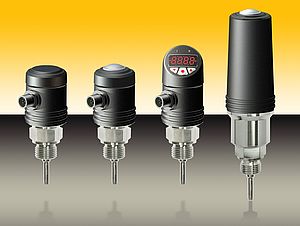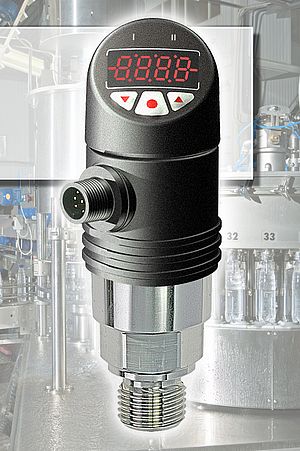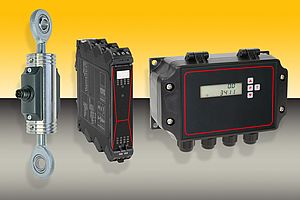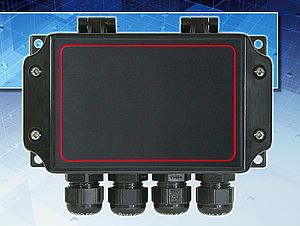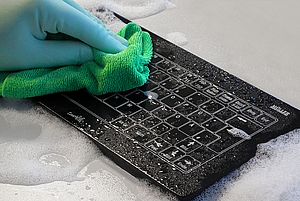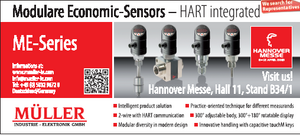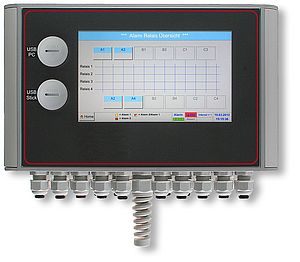Melt pressure sensors by Müller Industrie-Elektronik work according to the proven principle of strain gauge technology. Here, the pressure transmission occurs by a flush diaphragm in the melt channel via a closed capillary system to a measuring membrane. At the measuring membrane, a strain gauge is applied whose linear resistance change generates the electrical output signal. Depending on sensor type, standardized signals are available.
Melt pressure sensors by Müller Industrie-Elektronik work with a liquid metal alloy as transmission medium. Using a special production process of the pressure sensors, they can completely do without mercury filling and at the same time determine an exact, stable reading. A special membrane technology ensures maximum service life of the sensors and ensures consistently reproducible results. As standard, all melt pressure sensors are coated with titanium nitride to avoid adhesive melt residues. The melt pressure sensors are offered with process connections 1/2 "-20UNF-2A or M18 x 1.5. Alternatively, the sensors can also be supplied with an integrated temperature sensing element.
In general, the melt pressure sensors are electrically and mechanically compatible with all commercially available products for pressure and temperature measurement of plastic melt in the extrusion process.
Melt temperature sensors
An extensive melt temperature sensor product line is available from Müller-IE, in which all sensors are characterized by their robustness and very precise measurements. As measuring elements, isolated thermocouples and measuring resistors are available. The sensors are standard with tapered measuring tips. An additional alignment as for still used sword probes is not applicable. The probe tips are available in lengths of 5, 10, 15, 20 and 25 mm. In addition, for flush-mount measurement, type 0 can be supplied. For applications involving abrasive plastics, the use of measuring probes made of Hastelloy 2.4610 is recommended because its wear compared to the standard tip is considerably lower.


